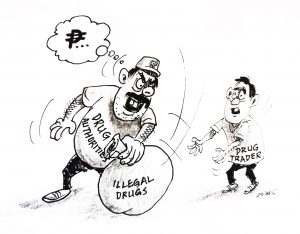From time to time, we hear of voluminous illegal drugs being confiscated by drug agents, sometimes amounting to billions in worth. We usually rejoice because those prohibited drugs were caught before their likely distribution to would-be victims. Shockingly, we never hear of those dangerous items anymore; the next thing we know is that they have been secretly kept and sold to the market.
This issue of confiscated drugs from drug traders poses a chronic challenge for drug authorities worldwide. While seizures of illicit substances are a crucial part of combating the drug trade, what happens to these confiscated drugs afterward is equally important. All too often, these drugs find their way back into circulation, recycled and resold by unscrupulous individuals looking to profit from addiction and suffering.
The recycling and reselling of confiscated drugs perpetuate a cycle of harm that devastates individuals and communities. When these drugs re-enter the market, they threaten public health and safety, fueling addiction, crime, and violence. Moreover, the lack of accountability in handling confiscated drugs undermines the efforts of law enforcement agencies to disrupt and dismantle drug trafficking networks.
To address this issue effectively, drug authorities must prioritize the safe and permanent disposal of confiscated drugs. Destroying these substances ensures that they cannot be repurposed for illicit use, safeguarding individuals from the physical and psychological harm associated with drug abuse. Furthermore, it sends a clear message that there is zero tolerance for the exploitation of vulnerable individuals through the illicit drug trade.
Destroying confiscated drugs helps to break the cycle of addiction and reduce the demand for illicit substances. Remove these drugs from circulation; let the authorities disrupt the supply chain and make it harder for drug traffickers to operate. This approach not only protects individuals from the dangers of drug abuse but also contributes to the broader effort to create healthier and safer communities.




